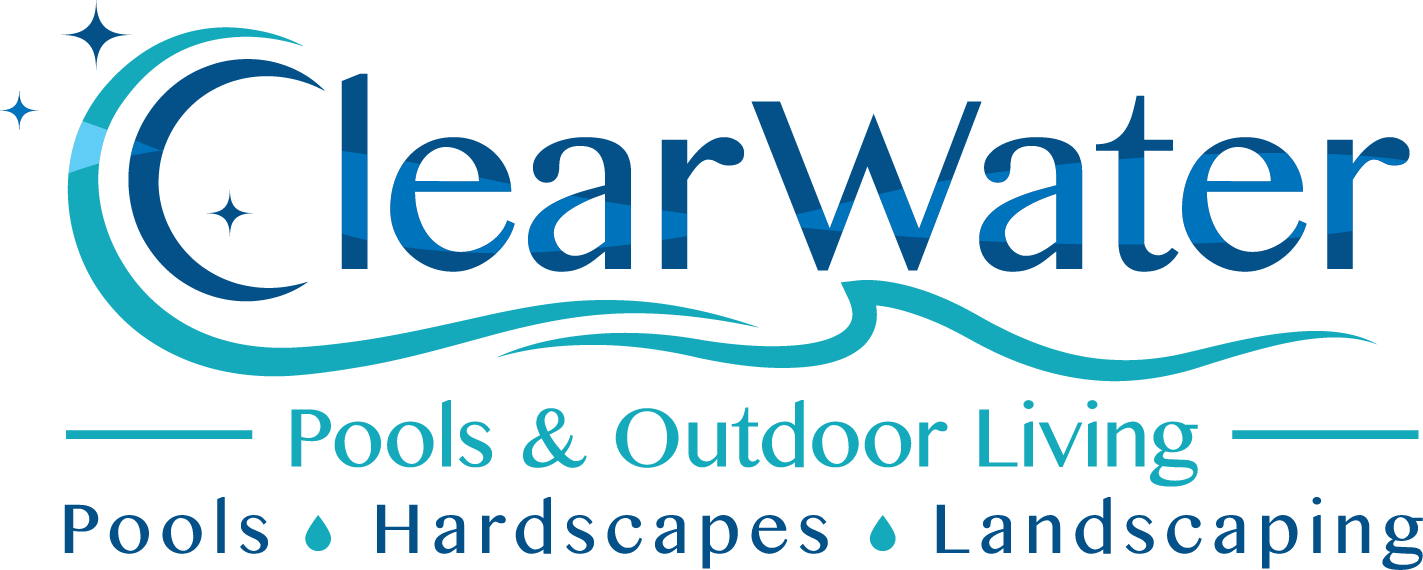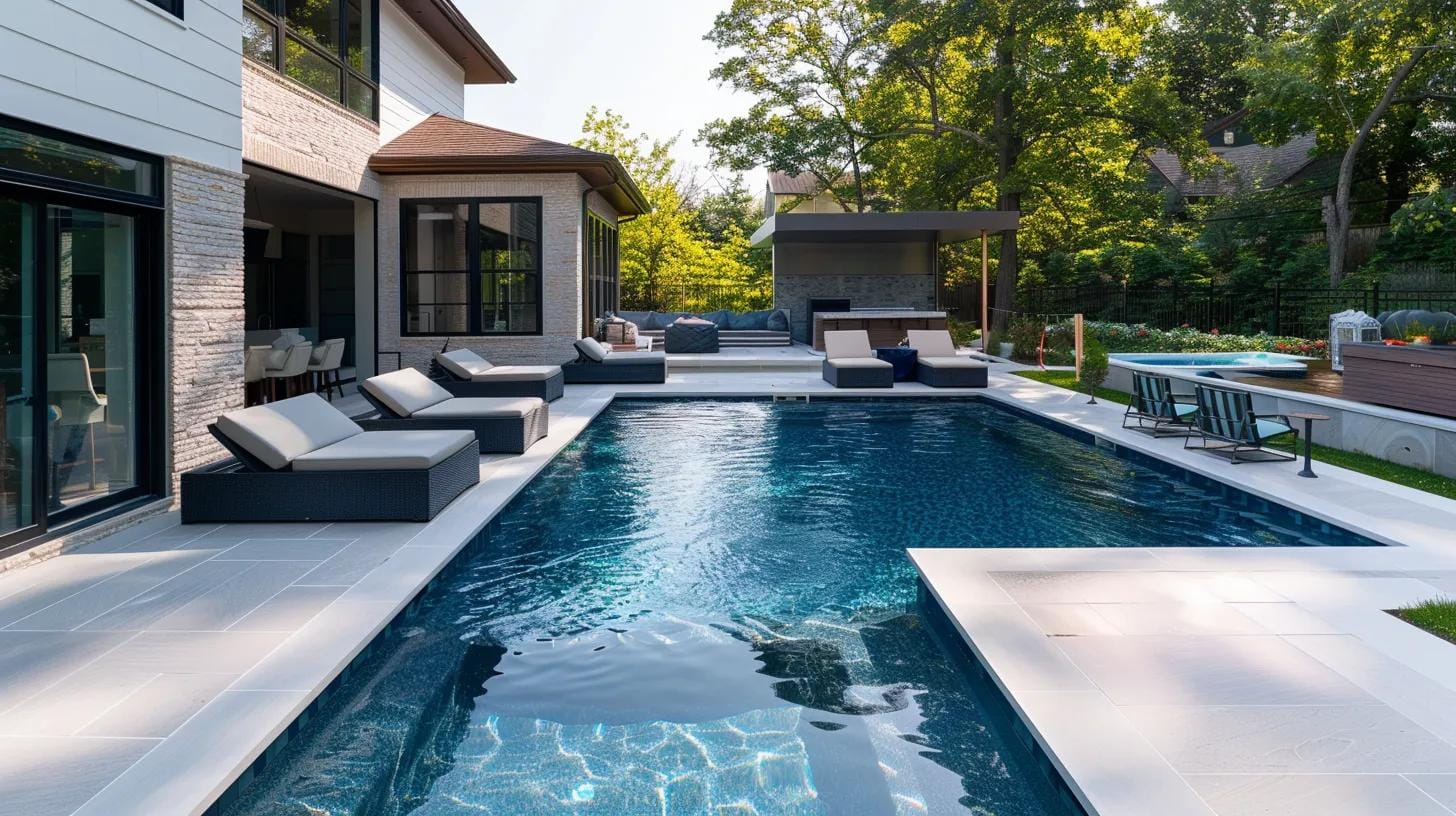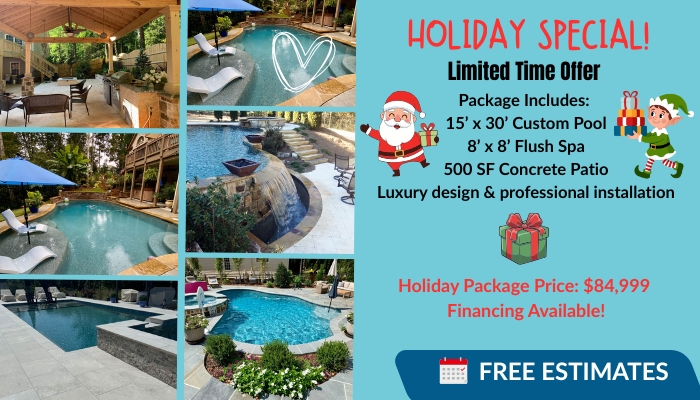When it comes to adding a pool to your Cumming home, the choice between an above-ground pool and an in-ground one involves more than just cost—it’s about lifestyle, space, and long-term value. Above-ground pools offer affordability and quicker installation, while in-ground pools provide durability and seamless backyard integration. But with Georgia’s hot summers and variable terrain, local factors like soil conditions, maintenance, and resale impact can sway your decision. In this guide, we’ll break down the pros, cons, and key considerations for Cumming homeowners, helping you dive into the perfect pool choice for your family and property.
In-Ground or Above-Ground Pool? Cumming’s Summer Pool Debate
What Are the Key Differences Between Above-Ground and In-Ground Pools?
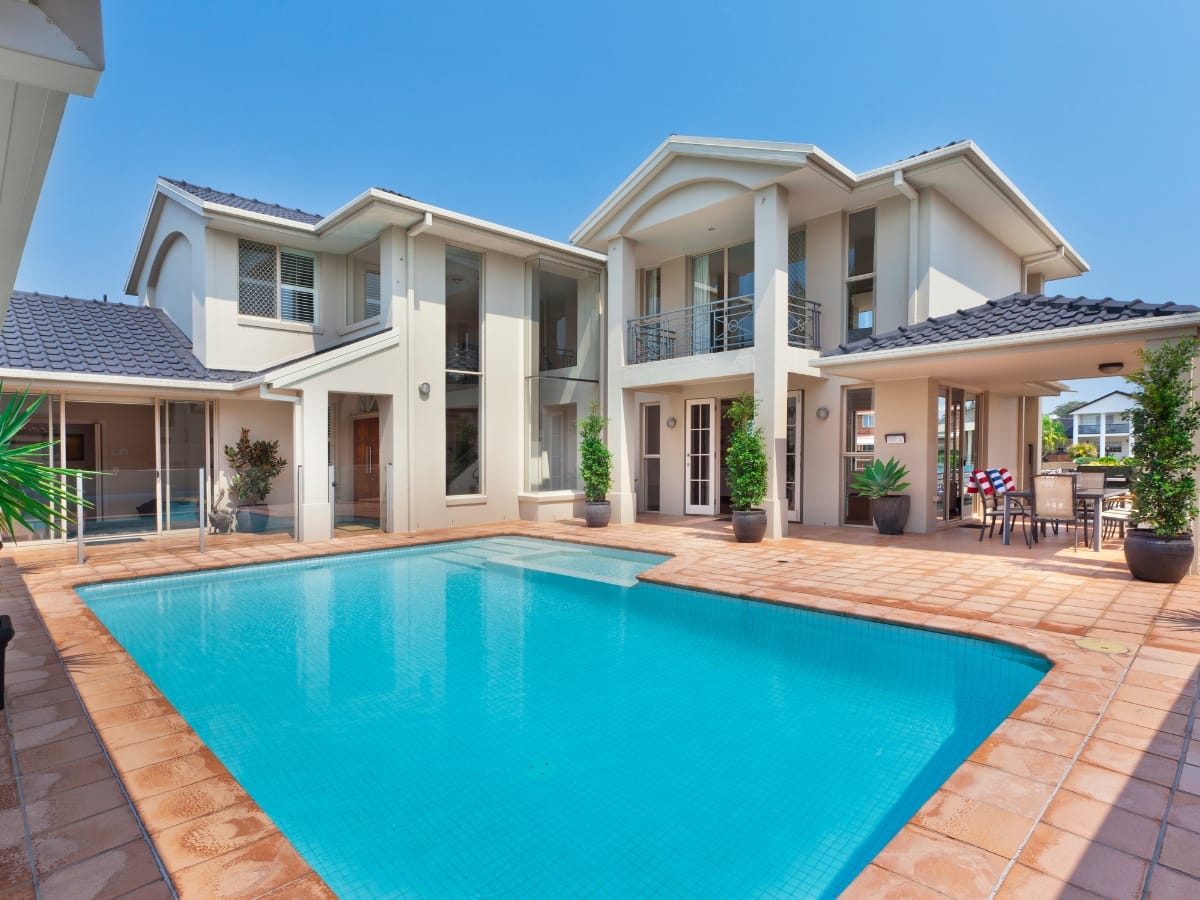
Above-ground and in-ground pools differ fundamentally in construction, installation, and long-term performance. The materials and methods used affect durability and overall appearance, making each type suitable for different homeowner priorities.
How Is an Above-Ground Pool Constructed and Installed?
Above-ground pools are typically constructed from materials such as steel, resin, or polymer. They use modular wall panels with an internal support frame and come in pre-packaged kits that require assembly on a leveled surface. Installation is simple and can often be completed in a few hours or a couple of days with minimal disruption. Their portable design allows for disassembly or relocation if needed. Integrated filtration and safety features add convenience, making them an affordable option for seasonal or temporary use.
What Defines an In-Ground Pool’s Design and Installation Process?
In-ground pools are permanent structures built through excavation and using materials like poured concrete, fiberglass, or vinyl lining. Their design involves professional pool planning with integrated features including lighting, heating, and custom landscaping. Installation takes several weeks due to construction, curing, and finishing work, resulting in a pool that blends with the home’s outdoor environment. The advanced engineering behind in-ground pools offers enhanced stability, long-term durability, and allows for additional customizations like waterfalls or spas.
Which Pool Types Are Most Popular Among Cumming Homeowners?
In Cumming, many homeowners favor in-ground pools for their lasting appeal and property value enhancement. However, above-ground pools continue to attract families who need a cost-effective and versatile solution. The choice is influenced by factors such as lifestyle, climate, and budget. High-end properties often invest in custom in-ground pools that complement sophisticated landscaping, while rental or seasonal homes may benefit from the practicality of above-ground options.
What Are the Pros and Cons of Above-Ground Pools for Cumming Homeowners?
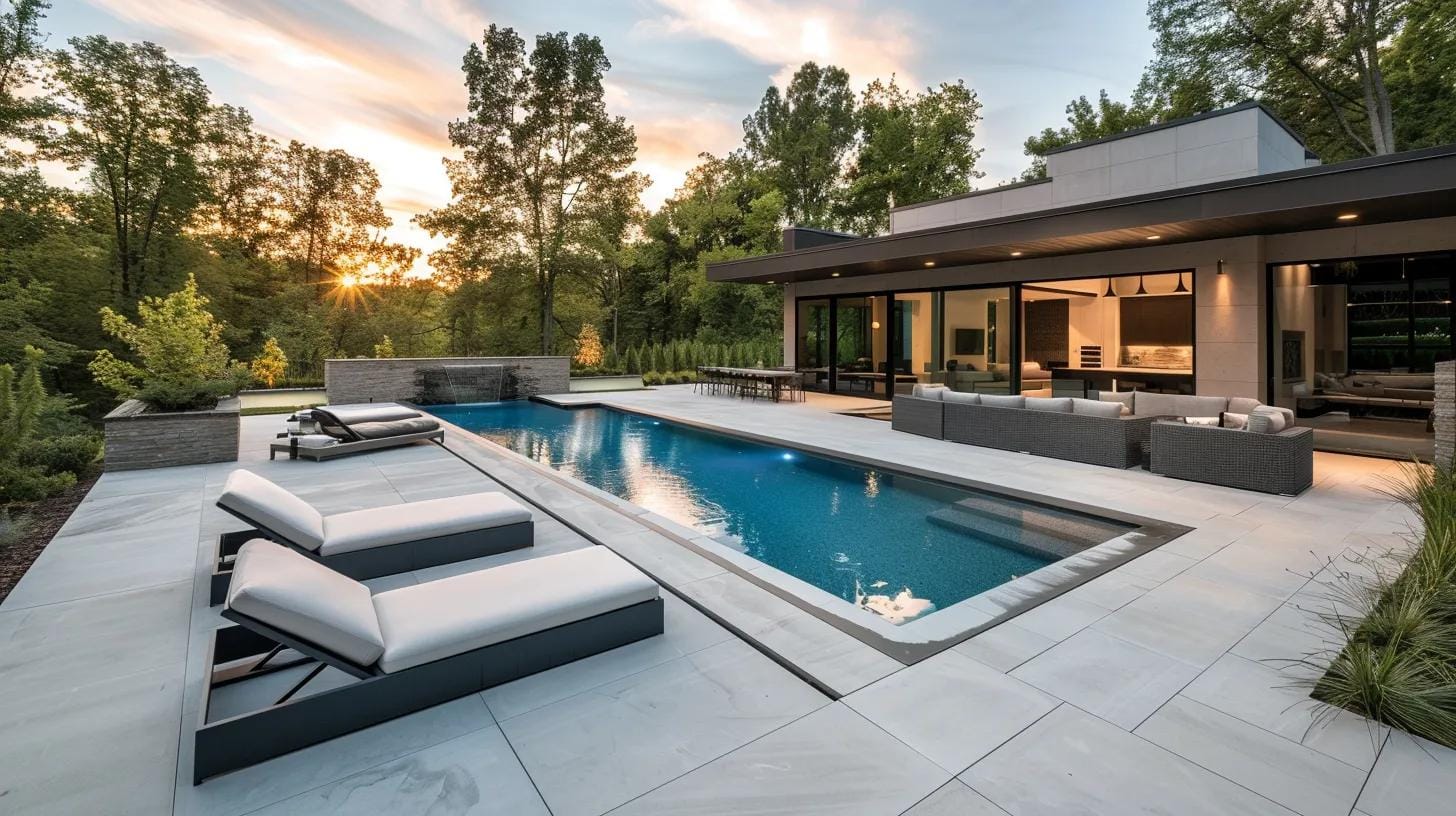
Above-ground pools are popular for their simplicity and affordability but come with compromises in durability and visual appeal. Here, we review the main advantages and limitations to help homeowners decide.
What Are the Cost Advantages of Above-Ground Pools?
Above-ground pools appeal to budget-conscious homeowners because they require a smaller upfront investment than in-ground installations. Without the need for excavation, concrete work or major landscaping, materials and labor costs stay low. This affordability makes it possible to allocate extra funds toward pool covers, safety fencing or seasonal maintenance. In addition, if plans or property use change, an above-ground pool can often be relocated or dismantled more easily, preserving its value for future use.
How Easy Is Above-Ground Pool Installation and Maintenance?
Most above-ground pool kits include clear, step-by-step instructions that a determined DIYer can follow without hiring a specialist. The shell, frame, and liner are assembled in a matter of days, and basic plumbing connections for filters and pumps are straightforward. Ongoing care relies on familiar tasks—skimming debris, balancing chemicals and checking the filter—as well as occasional liner inspections. While these pools are more exposed to the elements, the uncomplicated design helps homeowners spot leaks, rust, or wear before small issues become costly repairs.
What Durability Trade-Offs Should You Expect?
The materials used in above-ground pools—such as thin metal frames or vinyl liners—tend to wear faster than the concrete, gunite or heavy-duty composites found in in-ground models. In regions with wide temperature swings, liners may crack, and metal supports can corrode over time. Regular liner replacement and frame maintenance add to lifetime costs. Structural stability also hinges on proper ground preparation; uneven settling or poor drainage underneath the pool can shorten its usable life span.
How Do Above-Ground Pools Compare Aesthetically?
Visually, above-ground pools often stand apart from landscaping rather than blending in. Their bowl-shaped profile limits built-in features like sun shelves, swim-up lounges, or integrated lighting. While surrounding decking, skirting or planting can soften their appearance, customization remains more modest than with permanent installations. For homeowners seeking a seamless transition between pool and garden, an above-ground option may feel more like a temporary fixture than a long-term landscape enhancement.
What Are the Pros and Cons of In-Ground Pools for Cumming Homeowners?
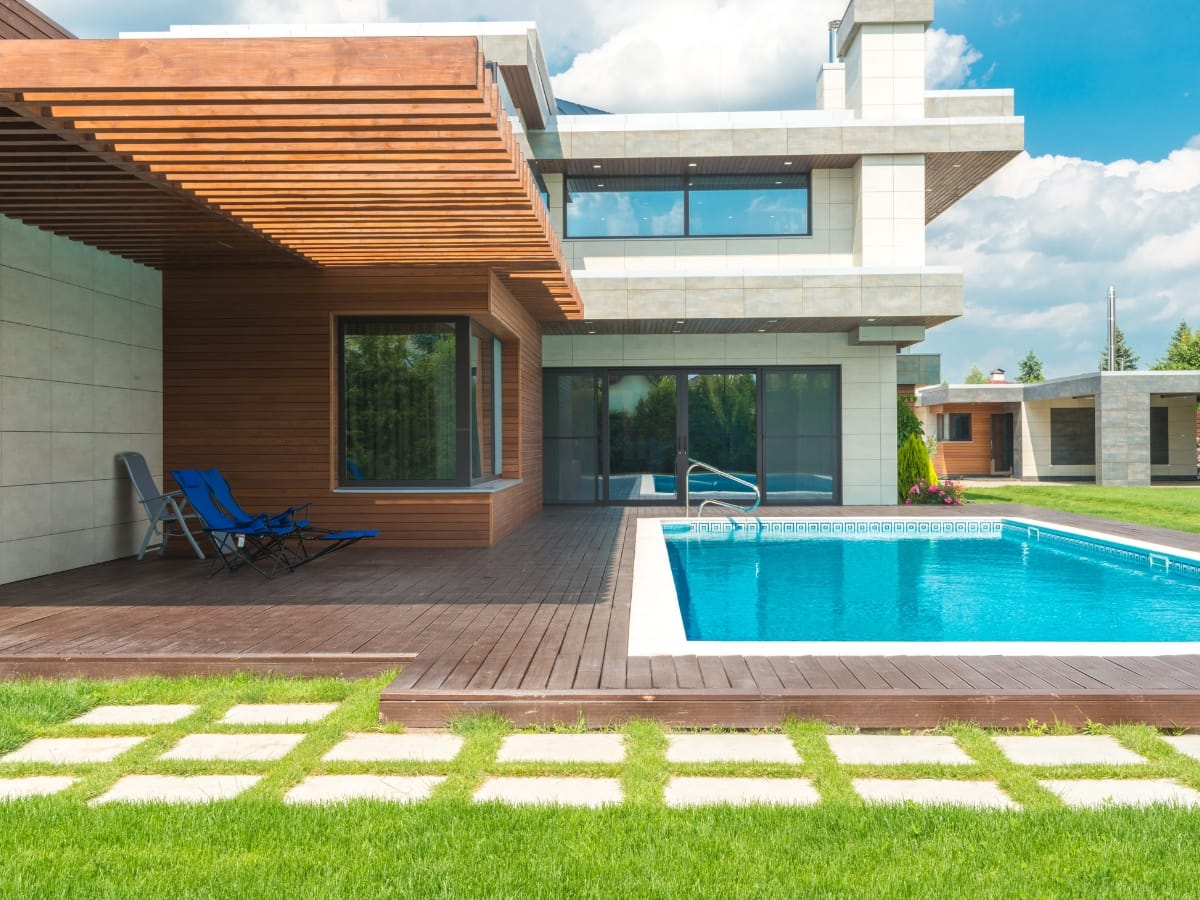
In-ground pools offer a premium look and permanent integration into outdoor spaces but come with higher upfront and maintenance costs. Below are the key benefits and challenges associated with in-ground pools.
How Do In-Ground Pools Enhance Property Value and Aesthetics?
In-ground pools add a sense of permanence and luxury to outdoor living spaces. Their custom shapes, finishes and surrounding hardscape work together to create a cohesive backyard retreat. Natural stone coping, decorative tile and integrated water features elevate the visual appeal, while lighting and landscape accents help blend the pool into its surroundings. Homebuyers often see well-designed in-ground pools as a desirable amenity, which can translate into higher resale values in competitive markets.
What Are the Typical Costs and Installation Timelines?
Installing an in-ground pool involves excavation, structural shell construction, and the installation of mechanical systems such as pumps, filters and heaters. Depending on site conditions—soil type, slope, and access—the process can take six to twelve weeks from initial planning to final inspection. Material choices also affect cost: vinyl-lined pools tend to be the most affordable, while fiberglass and concrete options carry higher price tags. Permitting, decking, and landscaping can further extend timelines and budgets, so homeowners should factor in allowances for design consultations, engineering fees and unexpected site challenges.
What Maintenance Challenges Do In-Ground Pools Present?
In-ground pools demand a regular maintenance routine to ensure water quality and structural integrity. Homeowners must monitor pH and sanitizer levels, clear debris from skimmers and clean filters on a weekly basis. Mechanical components such as pumps and heaters require annual inspections to spot wear, leaks or electrical faults. Seasonal tasks—winterizing lines in colder climates or shock treatments after heavy use—add extra steps. While these activities help prevent algae growth and equipment breakdowns, they also contribute to ongoing time and expense commitments for chemicals, parts and potential professional service calls.
How Do Above-Ground and In-Ground Pools Compare in Cost, Maintenance, and Durability?
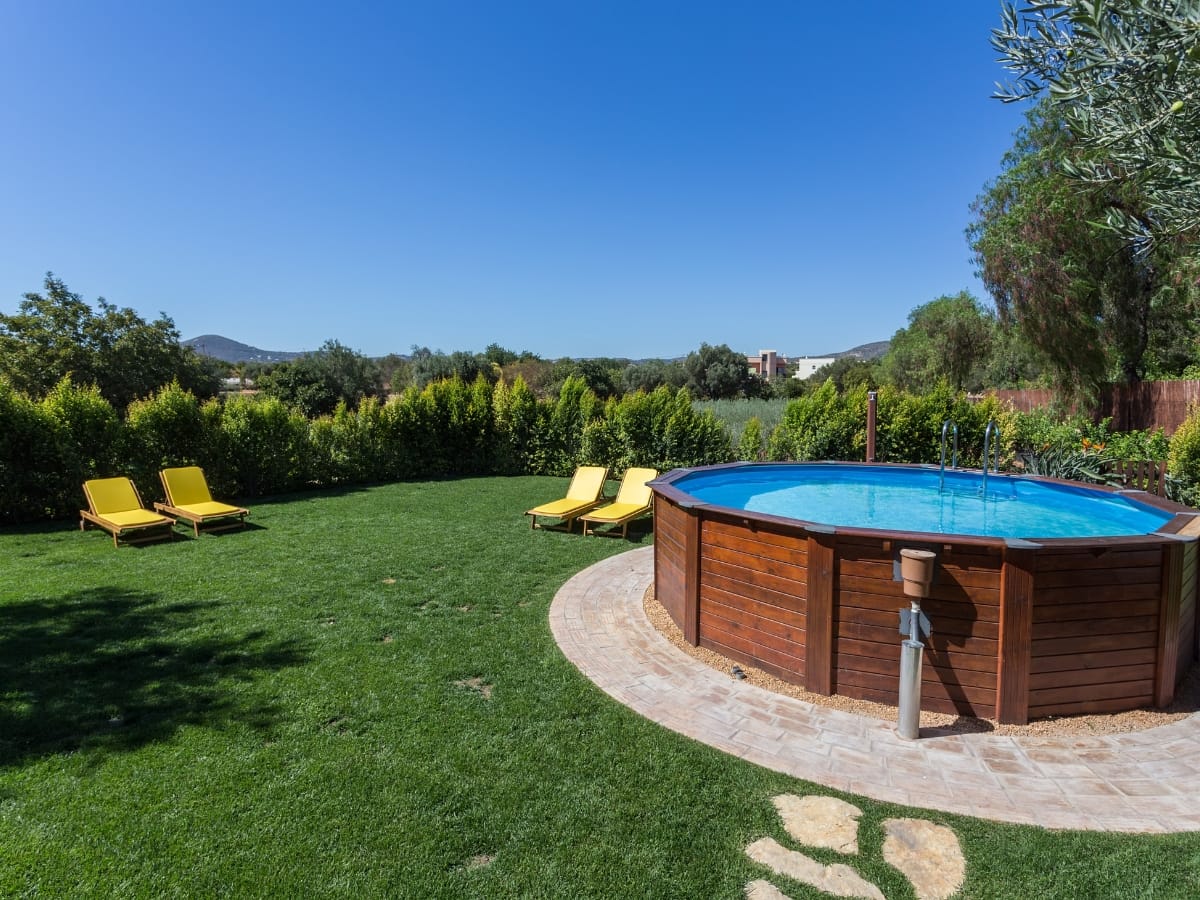
This section provides a side-by-side comparison of both pool types across key factors such as installation costs, maintenance requirements, and structural longevity.
What Are the Installation Cost Differences Between Pool Types in Cumming?
Above-ground pools are more budget-friendly at the outset since they require little to no excavation and use prefabricated frames and liners. Typical costs cover the pool kit, base preparation, and a simple filter system. In contrast, in-ground pools demand extensive site work, concrete or fiberglass shell installation, and custom plumbing and decking. Excavation, permits and landscaping add to both time and expense. While the higher upfront investment for an in-ground pool can boost property value, homeowners must weigh that against their initial budget and timeline constraints.
How Do Maintenance Requirements Differ for Above-Ground vs. In-Ground Pools?
Maintaining an above-ground pool tends to be straightforward. Its smaller water volume and basic filtration mean fewer chemicals, less vacuuming, and easier winterizing. The limited equipment often allows homeowners to handle upkeep themselves. In-ground pools, however, come with heavier pumps, heaters, automation systems and more complex piping layouts. Weekly tasks include balancing chemicals, cleaning skimmers and backwashing filters, while annual inspections of pumps, heaters and structural elements may require professional service. The result is a higher ongoing maintenance commitment in time and cost.
Which Pool Type Offers Better Longevity and Structural Integrity?
An in-ground pool built from reinforced concrete, gunite or high-quality fiberglass is engineered to last for decades when properly maintained. The solid installation resists shifting, corrosion and UV damage. Above-ground pools rely on steel, resin or aluminum frames and vinyl liners, which typically last five to 15 years before corrosion or liner failure sets in. For homeowners seeking a permanent feature that weathers seasonal temperature swings and heavy use, an in-ground pool delivers greater durability over the long term.
How Do Aesthetic Options Vary Between Above-Ground and In-Ground Pools?
In-ground pools offer expansive design possibilities: freeform shapes, built-in steps, tanning ledges, mosaic tile accents, integrated lighting and water features all blend seamlessly with landscaping. Surrounding patios, pergolas or fire features can be built right up to the pool edge. Above-ground pools, while practical and available in a range of shapes and finishes, tend to stand apart from the yard and offer limited surround options. For those who value a tailored backyard environment and cohesive visual appeal, an in-ground pool provides a far wider creative canvas.
What Local Factors Should Cumming Homeowners Consider When Choosing a Pool?
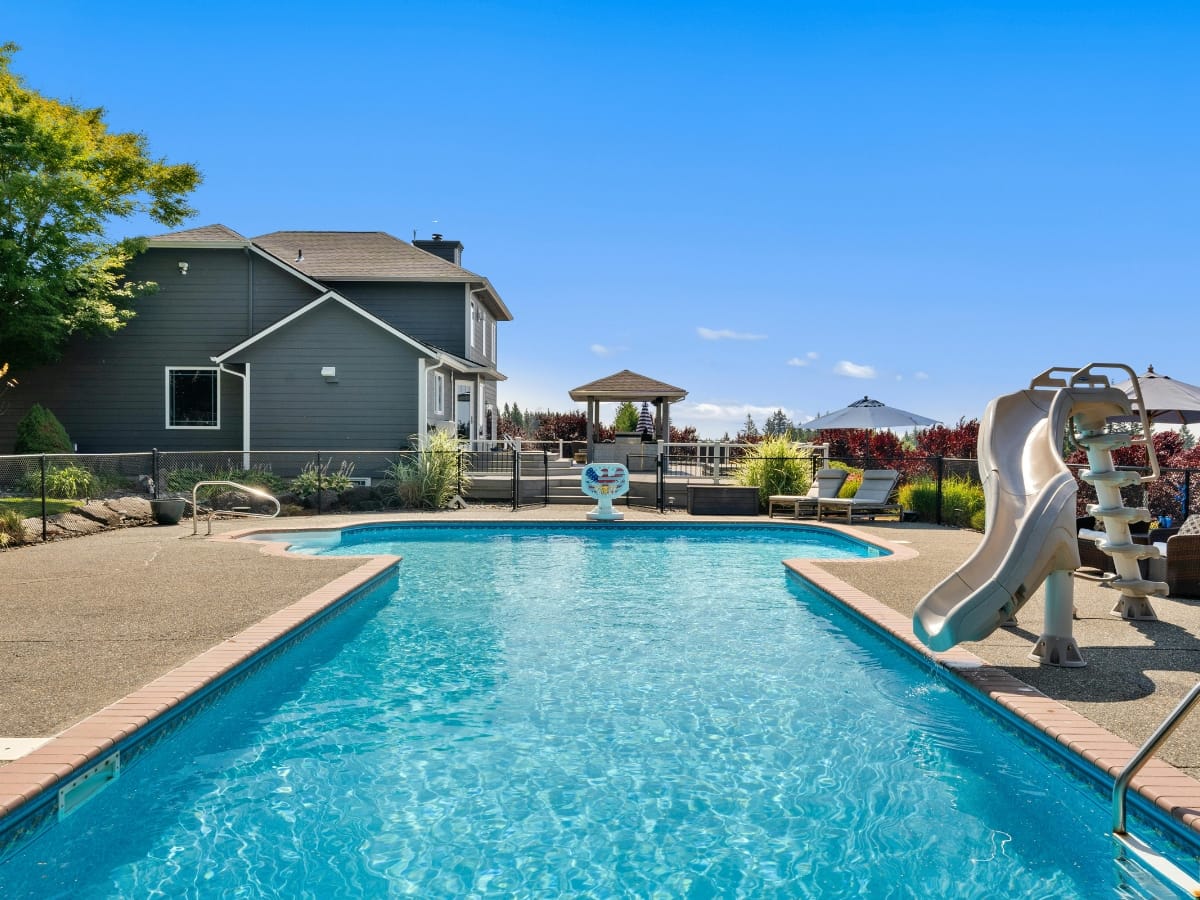
Selecting the right pool involves more than design preferences. Local building codes, soil conditions and financing options all influence safety, compliance and long-term performance. Understanding these factors up front helps avoid expensive surprises and ensures the pool meets both regulatory and site-specific requirements.
What Are the Pool Installation Regulations in Cumming, GA?
In Cumming, pools must comply with setback rules that dictate how far the pool edge sits from property lines. Safety fencing, self-closing gates and anti-entrapment drain covers are also mandatory. Homeowners need to secure permits before excavation and electrical work can begin. Working with a builder familiar with Cumming’s code requirements will streamline approvals and reduce delays, while ensuring the finished pool meets all local and state standards.
How Do Soil Conditions in Cumming Affect Pool Installation Choices?
Cumming’s mix of clay-rich and sandy soils affects pool foundations and excavation methods. Clay soils expand and contract with moisture, which can stress pool shells and piping. In sandy areas, water drains away quickly but may require soil stabilization to prevent collapse during digging. A soil test reveals load-bearing capacity and moisture tendencies. Based on those results, installers may reinforce the pool floor with steel rebar, add gravel backfill for better drainage or install a subsurface drainage system to protect the structure from shifting and hydrostatic pressure.
Where Can Homeowners Find Trusted Pool Contractors in Cumming?
Reputation and local experience are key when choosing a pool builder. Look for companies that provide detailed, written estimates listing material specifications, excavation work and equipment warranties. Request references and visit completed installations to verify quality of finish, coping and surrounding hardscape. Contractors should carry proper insurance and offer clear timelines for each phase—excavation, plumbing, shell construction, electrical connections and final landscaping. An installer who communicates proactively and follows a transparent process reduces the risk of cost overruns or hidden fees.
What Financing Options Are Available for Pool Installation in Cumming?
Financing can make a new pool more affordable by spreading costs over time. Local banks and credit unions often offer home improvement loans with fixed rates and terms up to 15 years. Some pool builders partner with lending specialists to provide low-interest payment plans or deferred interest arrangements. Home equity lines of credit also serve as a flexible source of funds, allowing homeowners to borrow what they need when they need it. Comparing annual percentage rates, origination fees and repayment schedules helps secure a solution that fits both budget and long-term financial plans.
What Are the Best Practices for Maintaining Above-Ground Pools and In-Ground Pools in Cumming?
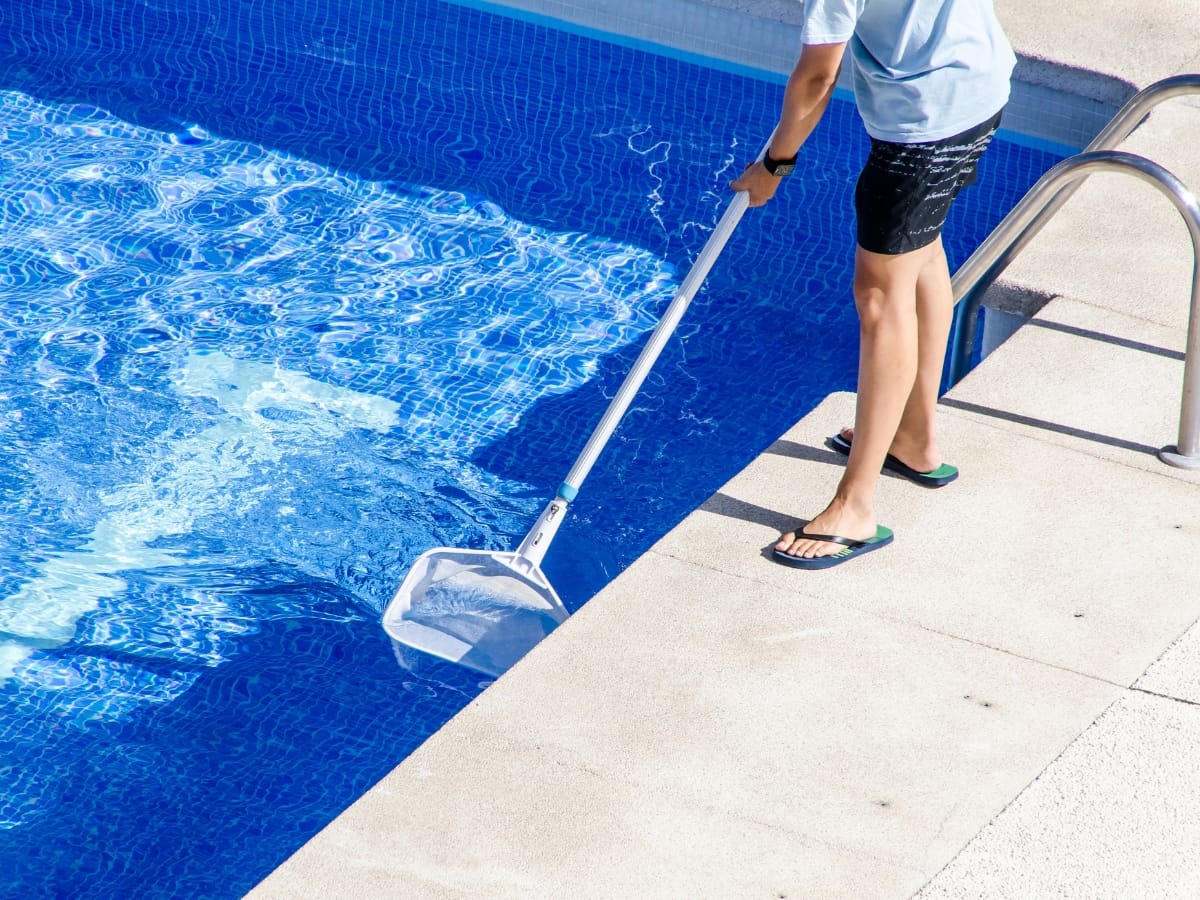
Keeping any pool in good condition requires a steady maintenance routine that adapts to seasonal changes. In Cumming’s mix of humid summers and occasional winter freezes, staying on top of cleaning, equipment checks, and chemical balance helps prevent damage, limits algae growth and extends both the pool’s lifespan and enjoyment.
How Often Should Above-Ground Pools Be Cleaned and Serviced?
Above-ground pools benefit from weekly attention. Skimming leaves and debris off the surface, brushing the liner walls and vacuuming the bottom help prevent algae and staining. Testing water chemistry—pH, alkalinity and sanitizer levels—at least once a week ensures swimmers remain safe and the filter system does not become overworked. Inspecting the pump, hoses and skimmer basket for clogs and wear should coincide with each cleaning. As temperatures drop, follow manufacturer guidelines to drain or cover the pool and winterize equipment so that freezing does not crack plumbing or damage the liner.
What Are the Essential Maintenance Tasks for In-Ground Pools?
In-ground pools call for a more comprehensive schedule. Daily or every-other-day skimming and emptying of skimmer and pump baskets keeps water circulating freely. At least twice weekly, brush tile lines and walls to prevent scale buildup and algae, then vacuum or run an automatic cleaner to remove loosened debris. Weekly water tests guide adjustments of pH, alkalinity and chlorine or salt levels.
Monthly, inspect and backwash sand or DE filters, check pump seals, and lubricate O-rings. Quarterly professional inspections of the pump’s motor, heater components and electrical connections will catch small issues—such as a worn gasket or loose wiring—before they become costly repairs. Finally, scanning the deck for cracks or settling prevents water intrusion that can undermine the pool’s structure.
Which Eco-Friendly and Energy-Efficient Pool Equipment Options Are Recommended?
Upgrading to variable-speed pumps can cut energy use by 50–70 percent compared to single-speed models; they adjust flow rate to match cleaning or circulation needs rather than running at full power constantly. Heat pumps that draw warmth from the air operate more efficiently than gas heaters, especially when paired with a rigid pool cover to reduce heat loss overnight.
Automated chemical dispensers monitor sanitizer levels and deliver precise doses, reducing both chemical waste and the risk of over-treatment. Finally, LED pool lights use a fraction of the electricity of traditional bulbs and last far longer, enhancing safety and ambiance without driving up utility bills. Together, these technologies lower operating costs, shrink carbon footprints and simplify routine pool care.
How Can Cumming Homeowners Decide Which Pool Type Is Right for Their Lifestyle and Budget?
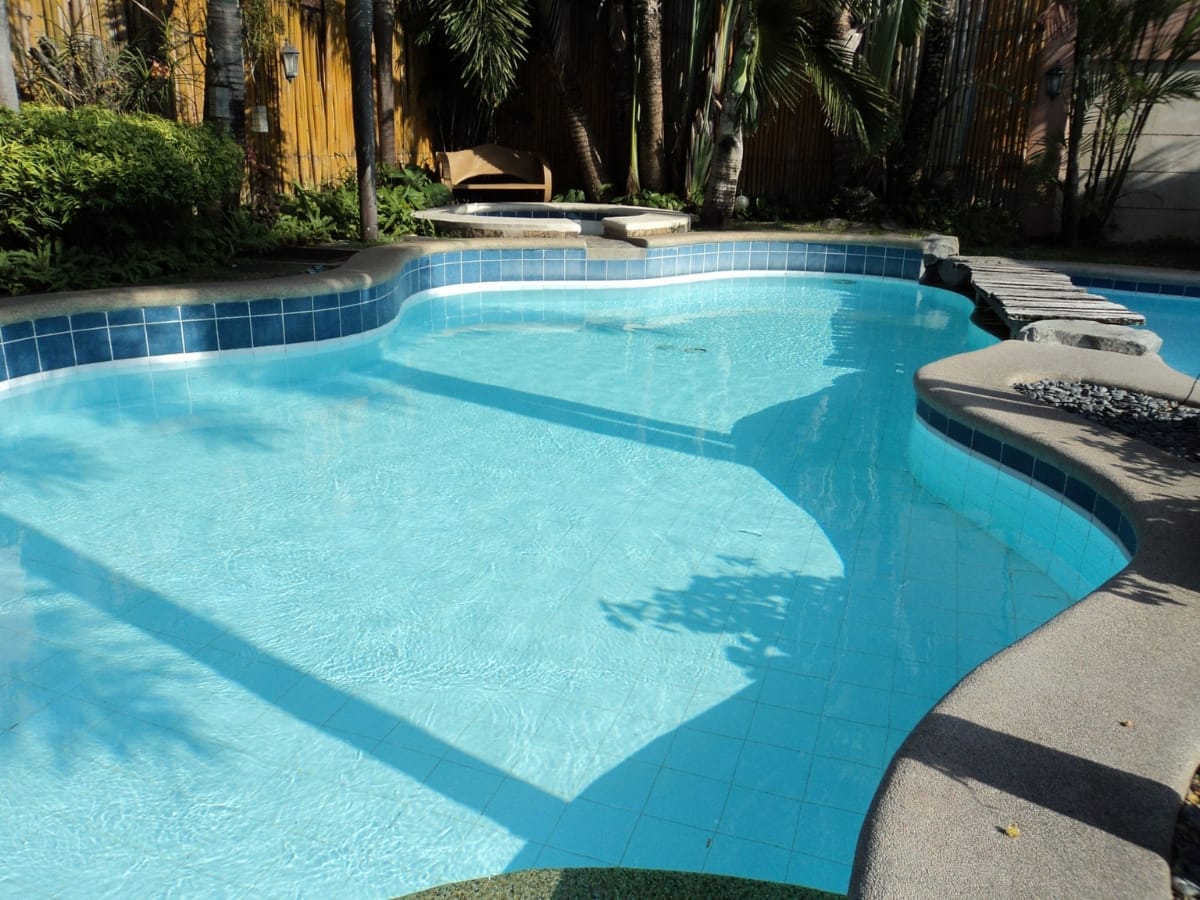
Choosing between an above-ground or in-ground pool means weighing how you plan to use it, what you can afford over time, and the value it will add to your property. Consider the ongoing operating expenses—such as energy, water treatment, and repairs—alongside initial installation costs. Think about how much time you want to devote to routine maintenance, and whether you prefer a simple setup that you can manage yourself or a more elaborate design with custom finishes. Also factor in how the pool will fit into your backyard’s layout and whether you might add features later, like lighting, landscaping or automation controls.
Essential Questions Before You Buy
Start by estimating the all-in cost of both installation and upkeep. Ask how long the contractor will need to complete the work and when you can realistically start swimming. Clarify what design options are available—depth variations, deck materials, built-in seating or water features—and whether those upgrades will affect warranties or service schedules. Finally, explore financing solutions to spread out payments, and compare those terms against potential energy-efficiency savings from advanced equipment.
Learning from Local Experience
Hearing directly from neighbors and reviewing nearby projects gives a practical sense of how pools perform over time in Cumming’s climate. Homeowner testimonials often highlight issues such as liner replacement frequency on above-ground models or winterization challenges with in-ground pumps. Examining case studies from area specialists—like the installations handled by Clear Water Pools—reveals how different soil conditions and drainage concerns were addressed, and which designs required less follow-up service.
When to Seek Professional Guidance
Consulting with a pool contractor early in the process can save time and money. Skilled professionals understand local permitting rules, setback requirements, and soil-load capacities, and can advise on the best season to begin work. Their insight helps match your property’s terrain with suitable pool styles, whether that means reinforcing an in-ground shell against clay-rich soil or ensuring an above-ground frame sits level on a gently sloped yard. By aligning design choices with your long-term maintenance expectations and budget plan, homeowners can feel confident in their pool investment well before the first shovel hits the ground.
Frequently Asked Questions
Q: What are the main differences in installation costs between above-ground and in-ground pools? A: Above-ground pools are generally more affordable due to simpler assembly and minimal excavation, while in-ground pools require extensive site preparation and professional construction, leading to higher initial costs.
Q: How does the maintenance of an above-ground pool compare to that of an in-ground pool? A: Above-ground pools need simpler, less frequent maintenance, whereas in-ground pools require regular professional servicing, detailed chemical balancing, and structural inspections.
Q: Which type of pool adds more value to a property in Cumming? A: In-ground pools typically add more value because of their permanent structure, enhanced aesthetics, and integration with landscaping, which boosts curb appeal and resale value.
Q: Are there eco-friendly pool options available for energy efficiency? A: Yes, many modern pool systems offer energy-efficient features such as variable-speed pumps, energy-saving heaters, and automated chemical feeders that reduce energy consumption and operating costs.
Q: What local factors should I consider before installing a pool in Cumming? A: Consider local building codes, soil conditions, availability of trusted contractors, and financing options to ensure a safe, compliant installation and long-term durability.
Q: How long does it take to install an in-ground pool compared to an above-ground pool? A: Above-ground pools can be installed in a few hours to days due to their modular design, while in-ground pools generally require several weeks to months because of excavation and extensive construction.
Q: Can financing options make the higher cost of an in-ground pool more manageable? A: Yes, many local contractors offer flexible financing plans, including low-interest loans and deferred payment options, which help spread the higher initial investment over time.
Final Thoughts
Choosing between an above-ground or in-ground pool for your Cumming home depends on your budget, space, and lifestyle needs—each offering unique advantages. At Clear Water Pools Atlanta, we guide homeowners through every pool construction step, from design to installation, ensuring you get the perfect pool for your backyard oasis. Ready to dive in? Call 770-406-8638 today to request your personalized pool estimate and let’s turn your summer dreams into reality.
